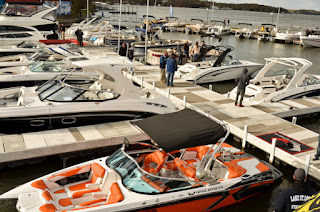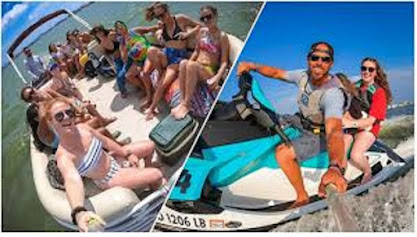Buoys -Areaids to Navigation floating objects that are anchored to the bottom. Their distinctive shapes and colors indicate their purpose and how to navigate around them.
Buoys, Beacons and Marks. The IALA Buoyage System is a worldwide standard sea mark system used in navigation to mark the edge channels. ... These buoys and marks indicate where safe water lies and where you should navigate safely within a channel. Always refer to a local chart to identify where potential hazards may be.
There are several types of Buoys, Control area buoy, Danger Buoys, Exclusion Zone Buoy, Information Buoy, Channel Marker Buoy, Mooring Buoy
Controlled Area
A white buoy or sign with an orange circle and black lettering indicates a controlled or restricted area on the water. The most common controlled area within Voyageurs National park is 'Slow-No Wake' speeds. 'Slow-No Wake' means operating your boat at the slowest possible speed necessary to maintain steerage, but not greater than five miles-per-hour, or idle.
It is important to note, that when approaching a no wake buoy at least 100 feet before the buoy your vessel should be at no wake speed. Need to remember that your wake just does not stop when you do, That wake will continue its forward momentum.
Danger (Hazard) Buoys
Hazard buoys and markers. A hazard buoys or markers indicate random hazards such as rocks and shoal. Hazard buoy is colored white with an orange diamond on two opposite sides and two orange horizontal bands. If they carry a light, the light is a yellow flashing (Fl) four seconds, light. Not all shallow areas or submerged hazards are marked by a hazard buoy.
When passing a Hazard Buoy Stay to the right, or on the open water side. a good rule of thumb for all buoys, is to stay at least 50 to 100 feet away. Many reason is that the buoys are held in place by a cable or chain attached to a anchor or dead man weight. the buoy is allow to float, by keeping distance this reduces the changes of the tether coming in contact with your vessel.
Exclusion Zone Buoy
This buoy marks an exclusion zone. Boats may not go beyond this buoy. Usually marks a swim area, or a dam. In many lakes where there are beaches or designated swim areas theses buoys are used. May also see this buoy in areas where marine life in protected.
Information Buoy
Information Buoys contain information, by words or symbols, of interest to mariners, such as directions to marinas. They are white with two horizontal orange bands and an orange square on two opposite sides. If they carry a light, the light is a yellow flashing (Fl) four seconds, light.
A information may be used in conjunction with Posted Command Signs . They will include warnings such as No Wake Zones, No Anchorage Signs, Speed Limit Signs, Low Head Dam Signs, Power Line Hazards and Pipe Line Hazards.
Channel Marker Buoy
Channel markers are placed in conspicuous places to mark safe water for navigating through channels without danger. They are color coded with red and green for that. purpose.
Mooring Buoy
Mooring buoys are a type of buoy, to which, ships can be moored in the deep oceanic areas. A mooring buoy weighs more than the general type of buoys. The mooring buoy is designed in a manner that there is a heavier weight located right in the bottom of the sea.









Comments
Post a Comment